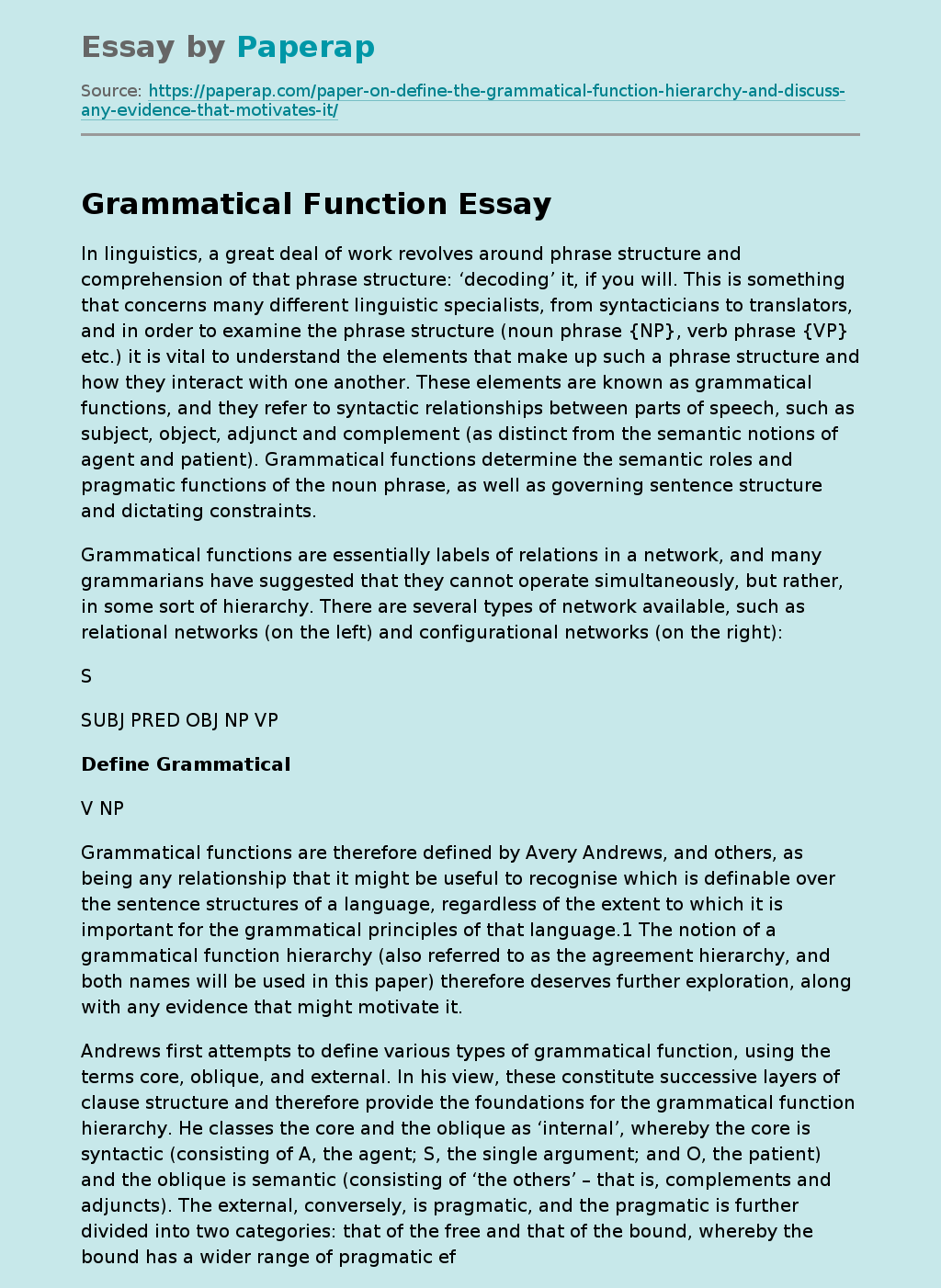Phrase Structure and Its Understanding in Linguistics
The following sample essay is about the structure of a phrase and its understanding in linguistics. Read the introduction, body and conclusion of the essay, scroll down.
In linguistics, a great deal of work revolves around phrase structure and comprehension of that phrase structure: ‘decoding’ it, if you will. This is something that concerns many different linguistic specialists, from syntacticians to translators, and in order to examine the phrase structure (noun phrase {NP}, verb phrase {VP} etc.) it is vital to understand the elements that make up such a phrase structure and how they interact with one another.
These elements are known as grammatical functions, and they refer to syntactic relationships between parts of speech, such as subject, object, adjunct and complement (as distinct from the semantic notions of agent and patient). Grammatical functions determine the semantic roles and pragmatic functions of the noun phrase, as well as governing sentence structure and dictating constraints.
Grammatical functions are essentially labels of relations in a network, and many grammarians have suggested that they cannot operate simultaneously, but rather, in some sort of hierarchy.
There are several types of network available, such as relational networks (on the left) and configurational networks (on the right):
Grammatical functions are therefore defined by Avery Andrews, and others, as being any relationship that it might be useful to recognise which is definable over the sentence structures of a language, regardless of the extent to which it is important for the grammatical principles of that language.1 The notion of a grammatical function hierarchy (also referred to as the agreement hierarchy, and both names will be used in this paper) therefore deserves further exploration, along with any evidence that might motivate it.
Andrews first attempts to define various types of grammatical function, using the terms core, oblique, and external. In his view, these constitute successive layers of clause structure and therefore provide the foundations for the grammatical function hierarchy. He classes the core and the oblique as ‘internal’, whereby the core is syntactic (consisting of A, the agent; S, the single argument; and O, the patient) and the oblique is semantic (consisting of ‘the others’ – that is, complements and adjuncts). The external, conversely, is pragmatic, and the pragmatic is further divided into two categories: that of the free and that of the bound, whereby the bound has a wider range of pragmatic effects, such as the indication of focus, presupposition or presentational articulation. The whole of the external category is considered independent of the system of internal grammatical relations, and thought of as being ‘superposed’ onto it. Other texts refer to this as an ‘overlay function’.2
This explanation begins to give the interested reader an insight into how the grammatical function hierarchy may be structured, and in their article on noun-phrase accessibility, Keenan and Comrie expand even further on this concept. They identify the grammatical function hierarchy, or noun phrase accessibility, a syntax-free way of identifying relative clauses in an arbitrary language. The grammatical function hierarchy therefore shares with X-bar theory the quality of generalisation: both aim to consolidate a single simplification of human language structure.
Phrase Structure and Its Understanding in Linguistics. (2019, Dec 05). Retrieved from https://paperap.com/paper-on-define-the-grammatical-function-hierarchy-and-discuss-any-evidence-that-motivates-it/

